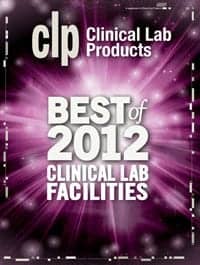
Those of you who recently returned from a week in San Francisco attending the American Association for Clinical Chemistry annual meeting are facing plenty of catch-up work and piles of mail to go through. But don’t look for any sympathy. You did, after all, just finish spending a week in one of America’s greatest cities. If you’re like me and took advantage of San Francisco’s many, fabulous culinary offerings, you probably have about five pounds to lose.
But before you set out on that three-mile run, take a moment to peruse this month’s issue for the latest products developed for the clinical lab.
For example, if you like to stay on the cutting edge of technology, don’t miss Jonathan Briggs’ interview with ChromaVision’s Vice President of Research and Development, Dr. Torre Bueno on page 19. The company’s Star Wars-based rare event analysis system, the Automated Cellular Imaging System, currently, is able to detect one suspicious cell among 108 normal cells. Remember the Strategic Defense Initiative (SDI) system? Its job was to determine quickly and accurately spot the nuclear payload among a field of many decoys. Despite the inherent logic of using computer-based rare event analysis, the technology has had plenty of hurdles to overcome.
On page 30, Dallas-based healthcare consultant C. Wayne Hibbs writes about his experiences helping laboratories achieve the best pricing for equipment and reagents and how the task has changed over the years. He makes some interesting parallels between the development of the chemistry analyzer and the development of the computer, and he ends with an analysis of nine lab facilities and how they compared the proposals of two vendors. He concludes that the best deal for labs today is not the same deal offered in the past. The labs Hibbs worked with decided that a fully-committed reagent-rental deal could net them the best deal from their vendors. Check out the numbers and see how your lab compares.
This month’s Product Technology Brief details the Careside point-of-care analyzer. Aside from its R2D2 cuteness, the Careside is targeted at the physician labs that gave up most of their testing in the early days of CLIA regulations and may be looking to recoup some of that lost revenue. With 38 FDA-cleared or exempt tests and a price tag of less than $14,000, the Careside has a fighting chance to recover some of that market share for the POL.
In our Geriatrics Disease Management section, Jack Montgomery, technical specialist in chemistry and special chemistry at Rogue Valley Medical Center in Medford, Ore., raises some interesting points about the importance of matching your total PSA (prostate specific antigen) test with your free PSA test. There are only about nine total PSA tests currently available in the United States, he points out, and only a few have FDA approval to aid in the detection and monitoring of prostate cancer. Only one free PSA test is currently approved by the FDA, so why are so many others being used? This is certainly not the last word you’ll hear on this topic.
By the way, due to production deadlines, our coverage of new products launched at AACC will appear in the September issue. See you in September.
Coleen Curran
Editor



